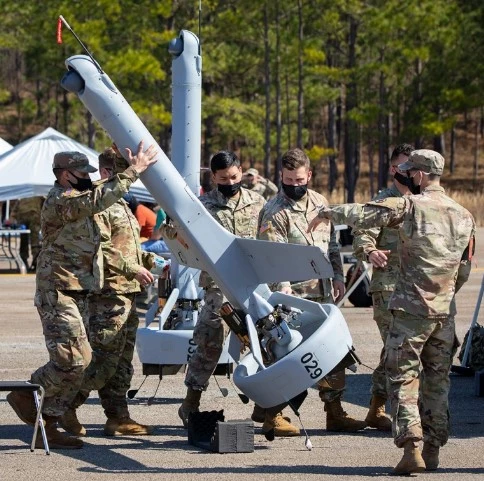The US Army has chosen the enhanced vertical liftoff V-BAT UAS developed by Northrop Grumman and Shield AI to take part in the Army's Future Tactical Unmanned Aircraft System (FTUAS) competition, Increment 2, to find a replacement for the venerable RQ-7B Shadow tactical drone.
First flown in 1991, the RQ-7B Shadow has racked up an impressive operational record since it first entered service in 2001. However, its catapult launch system, arrestor wire landings, and inability to operate in all weather means its days are numbered and the US Army is seeking a simpler and more effective replacement.
One formal candidate is an enhanced version of the V-BAT drone platform originally developed by Martin UAV, which finished flight testing in 2021. Unlike the Shadow, the V-BAT is designed to be transported and operated by a team of two soldiers, lifts off and lands resting on its tail, flies horizontally, and is equipped with a ducted fan to provide better performance while protecting the operators from exposed blades.

The V-BAT can remain airborne for eight hours with an extra hour's fuel left in reserve. Its modular system allows for a variety of advanced surveillance and electronic warfare (EW) payloads for persistent reconnaissance to support US Army Brigade Combat Teams, Special Forces and Ranger battalions. These modules include electro-optical/infra-red, synthetic aperture radar and EW systems.
For the Increment 2 phase of the US Army competition, over a seven-week period the Northrop team is expected to define and integrate the modular open-system architecture of the V-BAT.
"Our team’s enhanced V-BAT embodies more than 30 years of experience designing, delivering and sustaining advanced unmanned aircraft systems, combined with a field-proven platform and production facilities," said Angela Johns, vice president, autonomous and tactical air systems, Northrop Grumman. "We bring a unique perspective and capabilities to this critical Army mission."
Source: Northrop Grumman





